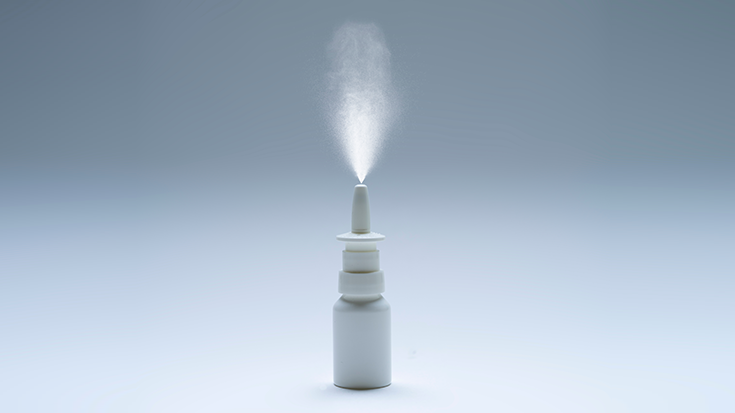
FDA to Address Skin Pigmentation in Pulse Oximetry
Recent reports suggesting pulse oximeters can be affected by skin pigmentation have led the FDA to plan a public meeting of the Medical Devices Advisory Committee later this year to look into the evidence and offer recommendations to patients and providers.
The committee will also discuss the amount and type of data manufacturers should provide to assess pulse oximeter accuracy and what should be done to guide other regulatory actions should they become necessary.
In the meantime, the FDA points patients, caregivers, and providers to recommendations published in February of 2021 that offer guidance to the public on taking a reading, interpreting a reading, and when to contact a health care provider. These recommendations also include guidance for health care providers on factors that can affect the accuracy of pulse oximeters, how to understand the accuracy of a given device, and why you should figure accuracy limitations into care decisions.
Furthermore, a device description, interpretation and limitations of pulse oximetry, FDA actions, and how to report problems with a pulse oximeter are also included in the 2021 recommendations. Read More
COVID-19 Caused More Severe Illness in Kids than the Flu
A new study from investigators at University Hospitals Rainbow Babies & Children’s Hospital suggests COVID-19 put more children in the ICU than is typically seen with influenza.
Using the Virtual Pediatric Systems database, the researchers compared epidemiology and outcomes between patients in the pediatric ICU who have a primary diagnosis of influenza from April 2018 to March 2020 and pediatric ICU patients with COVID-19 and MIS-C from April 2020 to June 2021.
The database identified 1,561 pediatric ICU patients with influenza (about 200 per quarter) and 1,959 with COVID-19 (about 400 per quarter). While patients with COVID-19 had a higher risk of mortality, actual mortality did not differ between the two groups.
The authors note that the influenza data came from a time when no public health measures were actively in place to help prevent the spread of the flu, while the COVID-19 data came from a time when such measures, like masking, social distancing, and remote learning, were in place.
“It’s important to note those measures did help to decrease critical illness from many respiratory viruses and nearly eliminated influenza admissions to pediatric ICUs,” said study author Steven L. Shein, MD. “Without them in place, especially for this largely unvaccinated population, we can assume COVID-19 would have led to even more critically ill children.”
The study was published by JAMA Network Open. Read More
Varenicline Ups Quit Rate in African American Smokers
Varenicline is effective in helping African American smokers kick the habit, report researchers from the University of Kansas Cancer Center who compared outcomes between those who were given the drug and those who received a placebo.
The study, which was published in JAMA, involved 500 adults age 18 or older who were daily smokers and had expressed a desire to quit. All of the participants received smoking cessation counseling.
After six months, 16% of those on varenicline were confirmed to be still abstinent from smoking via saliva samples. That compared to 7% of those in the placebo group. Results were even more striking after 12 weeks. At that point, 19% of the varenicline participants were abstinent vs. 7% of the placebo participants.
The researchers found that the drug worked particularly well for those identified as light smokers. For example, at week 12, 22% taking varenicline were abstinent, while only 9% in the placebo group could say the same.
Researchers did not note differences between the two groups in terms of side effects. Read More
COVID-19 Has Been Hard on WTC First Responders
According to researchers who monitored World Trade Center (WTC) first responders who contracted COVID-19, those who suffered from chronic conditions related to their WTC exposures had more severe COVID-19 and were more likely to develop long COVID.
Overall, 60% of those with severe COVID-19 reported a previously diagnosed upper respiratory disease, 49% gastroesophageal reflux disease, 35% obstructive airway disease, and 30% a concomitant psychiatric disease.
The severity of COVID-19 was independently associated with older age, being Black, having obstructive airway disease, and having worse self-reported depressive symptoms. Disease severity was significantly and consistently associated with long COVID.
“Fifty-seven percent of WTC responders with symptoms severe enough to cause hospitalization had persistent COVID symptoms,” said study author Sean Clouston, PhD.
The study was funded by the National Institute of Occupational Safety & Health and published by the International Journal of Environmental Research and Public Health. Read More
Few Patients Suffer Rebound Symptoms from Paxlovid
Anecdotal reports about rebound symptoms after a course of Paxlovid to treat COVID-19 in high-risk people have become increasingly common. However, researchers from the Mayo Clinic who studied 483 patients who took the drug found rebound symptoms in only four, or 0.8%, of the group.
All four suffered from comorbidities ranging from coronary artery disease to prostate cancer. Obesity was seen in three of the patients, and three also had hypertension.
While all of the patients had been vaccinated against COVID-19, their last shot had been more than 90 days prior to coming down with the virus. In addition, the rebound symptoms seen in the four patients were mild and resolved without further treatment.
Overall, Paxlovid did its job. All patients in the study recovered from COVID-19.
The investigators believe a replication of the SARS-CoV-2 virus might have triggered a secondary immune response that ended up causing the rebound symptoms in the four patients in their study. However, they call for additional research to determine whether that is what is happening in these cases.
The study was published by Clinical Infectious Diseases. Read More
Air Pollution Travels from the Lungs to the Brain
It is well known that air pollution harms the lungs, but it has an effect on many other organs as well. Now researchers from the University of Birmingham working with institutions in China have found that when air pollution is inhaled into the lungs, it can also work its way into the brain.
The team identified a direct pathway between the two organs wherein inhaled fine particles move through blood circulation to the brain. The fine particles were found in human cerebrospinal fluids taken from patients with brain disorders.
The investigators also found that once the fine particles reach the brain, they remain longer than they do in other metabolic organs, which they believe may link air pollution to brain conditions and neurological disorders.
“The data suggests that up to eight times the number of fine particles may reach the brain by traveling, via the bloodstream, from the lungs than pass directly via the nose — adding new evidence on the relationship between air pollution and detrimental effects of such particles on the brain,” said study author Professor Iseult Lynch.
The study was published by PNAS. Read More
Email newsroom@aarc.org with questions or comments, we’d love to hear from you.














